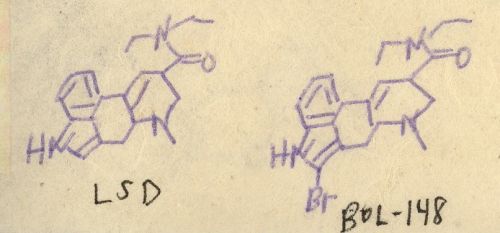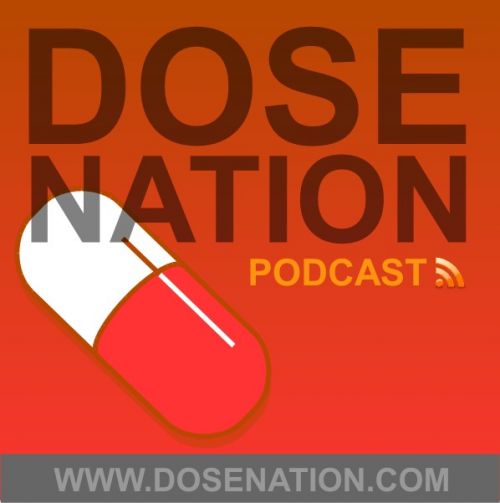LSD research: BOL-148
 From the LSD Research blog:
BOL-148 is the 2-brom derivative of LSD. There is a bromine in place of hydrogen at position 2.
In spite of its close structural relationship to LSD, BOL-148 has no psychedelic effects. In 15 healthy males, doses of 75-110 ug/kg BOL-148, which 100X exceed an effective dose of LSD, caused no change in pupillary dilation, patellar reflex, or blood pressure (H. Isbell, 1959). BOL-148 did not alter the behavior of 6 individuals with schizophrenia, when given at 10X the dosage of active LSD, although for BOL-148 these doses may have been too low to observe any effect. One mg BOL-148 twice a day for 2 weeks, or 5 mg for 3 days had no evident effect on their psychoses (W.J. Turner, 1958).
Unlike LSD, which is one of the most potent drugs known to affect the electrical potentials of the brain, BOL-148 is without effect on the EEG. There was no sign of the fast electrical activity or alerting behaviour seen with injections of LSD in cats, even when doses of up to 100 ug/kg of BOL-148 were used intraventricular (P.B. Bradley, 1956). BOL-148 produced no EEG changes in Macaca mulatta, in high dose ranges 110-175 ug/kg (R.R. Monroe, 1961). Saline gave the same response as 1000 ug/kg BOL-148 in cats with permanently implanted EEG electrodes (E. Eidelberg, 1965). In rabbits, 500 ug/kg BOL-148 failed to produce EEG alerting for longer than 15 minutes (A.K. Schweigerdt, 1966).
BOL-148 has a very slight change in molecular structure compared to LSD, but it has none of the behavioral effects of LSD. When LSD or BOL-148 were administered intraventricularly to cats, LSD caused behavioral arousal whereas BOL-148 produced mild sedation (P.B. Bradley, 1956). In rabbits, BOL-148 had a neutral effect on eyeblink conditioning, whereas LSD enhances this specific type of behavioral learning (J.A. Harvey, 2003). No affective changes in Papio papio were observed after BOL-148 in doses of 2-4 mg/kg (M.D. Fairchild, 1980).
|

Recently @ DoseNation
|
|






















when bol was given intraventricularly, it still had no behavior or EEG effects, thus its not a blood/brain barrier issue
The comments posted here do not reflect the views of the owners of this site.